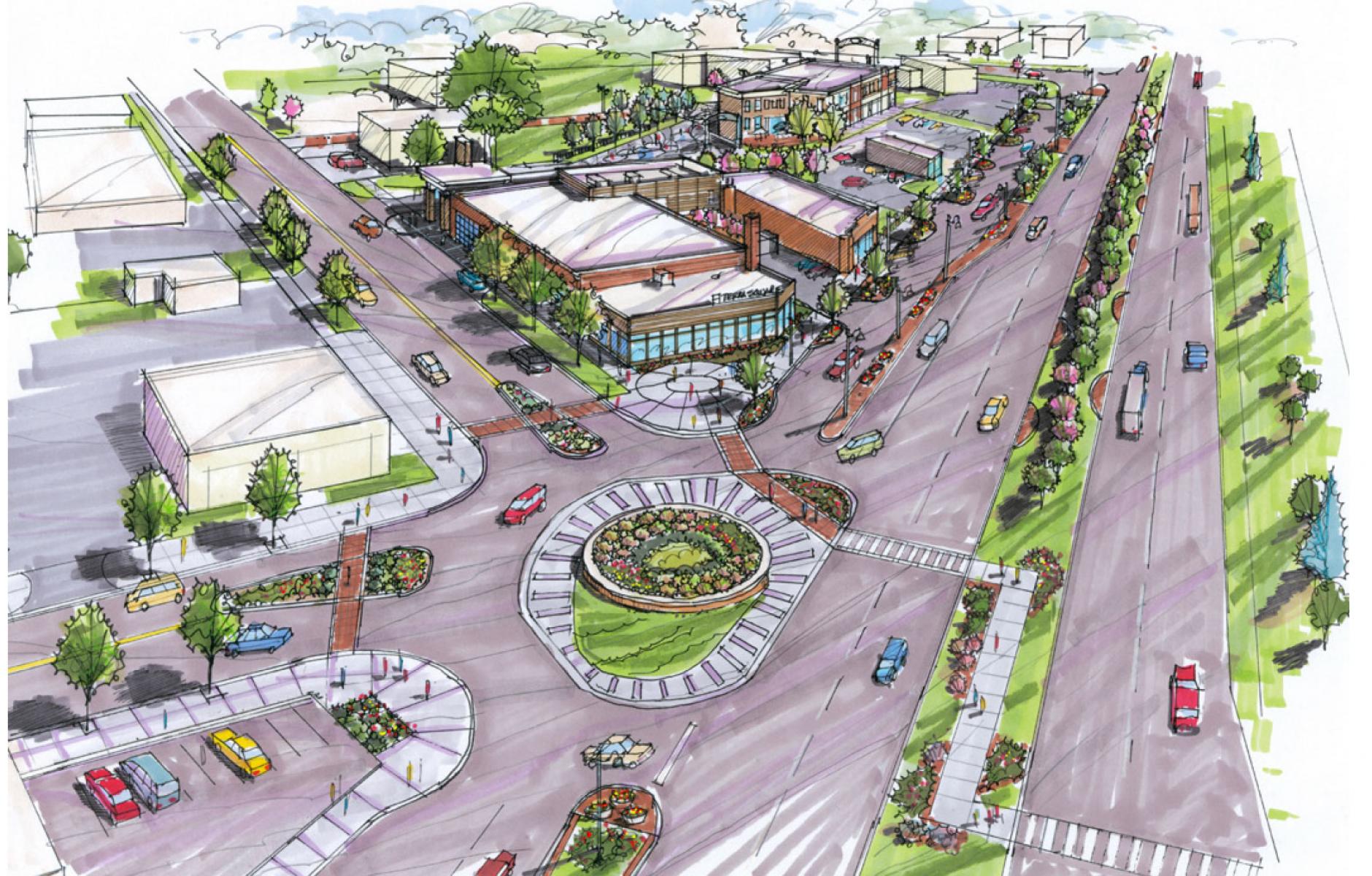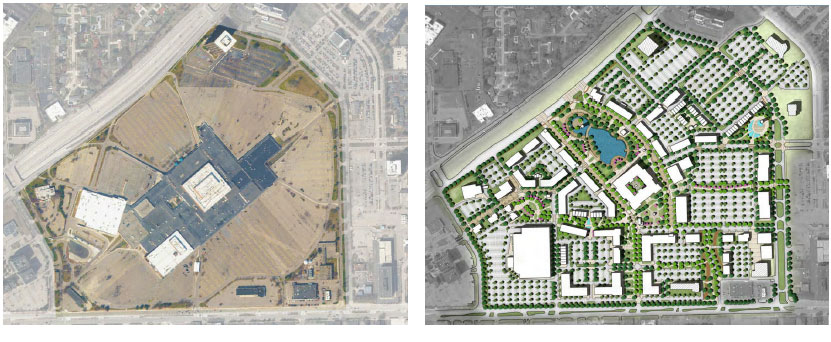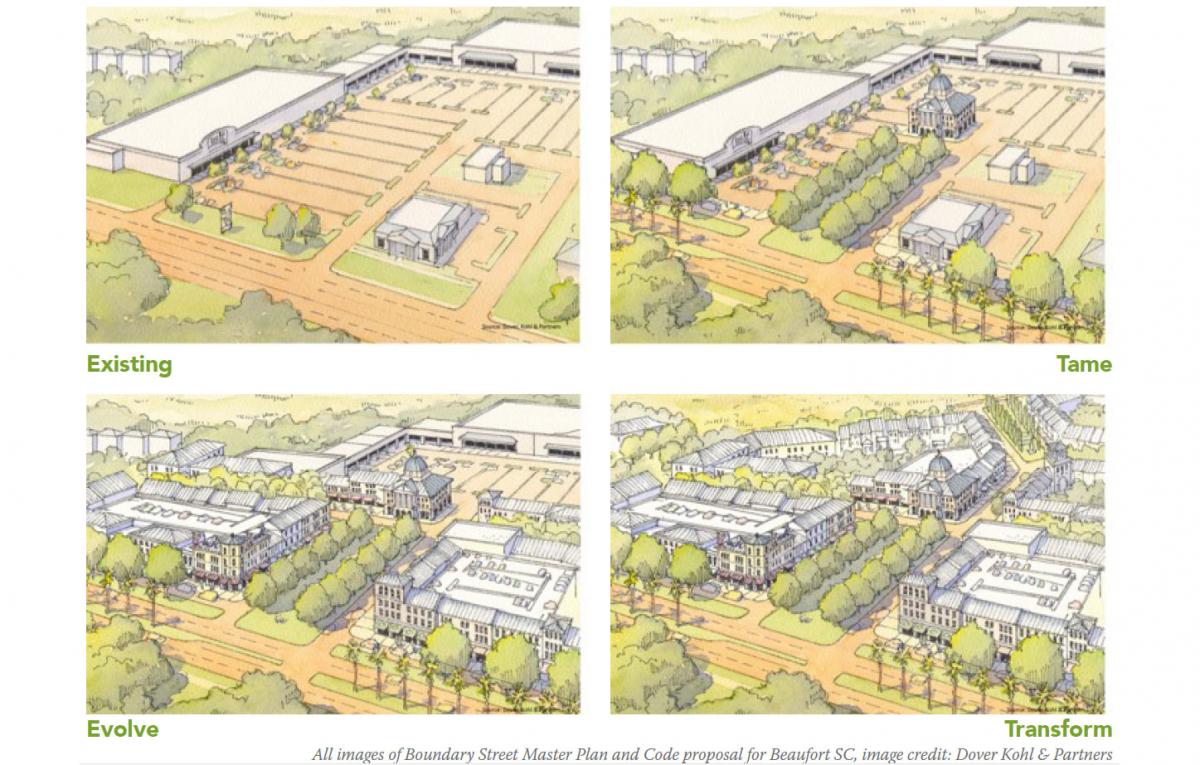
How to incrementally revitalize the suburbs
Enabling Better Places: Commercial Corridors and Shopping Centers is published by CNU and the Michigan Municipal League (MML), with funding from the Michigan Economic Development Corporation (MEDC). The report breaks new ground in that it focuses on incremental steps to revitalizing suburban landscapes in Michigan—and its principles and techniques are applicable to communities nationwide.
Suburban landscapes, which comprise much of the built environment, are vital for fiscal sustainability and economic development. “A community that identifies opportunities to create new walkable places through targeted redevelopment of suburban areas can inject new taxable value into the budget—while making efficient use of existing infrastructure,” the authors note.
Incremental suburban retrofit calls for action on many fronts—code reform, redesigning thoroughfares, revising parking policy, leveraging infrastructure investments, changing land uses, and more. A wide combination of tactics and strategies are available, and so the report offers recommended sequences of action, while describing the policies, strategies, and techniques in clear language.
“Across the country, evolving suburban landscapes represent enormous opportunities to creatively rethink the built and natural environment,” according to Enabling Better Places. “ ‘Suburban landscapes’ describes the low-density, single-use conditions that can be found in any geographic area: rural towns, city limits, or suburbs. Rescaling these places for pedestrians can help them to become better places, restoring activity in the street and creating lively, prosperous places to live and work.”

‘Suburban landscapes’ are found everywhere that automobile-oriented development has occurred. The report therefore applies to a broad swath of the American landscape—not just the outskirts of major metro areas. The report is the second of a set of two documents, and both are useful and cover independent ground.
“Enabling Better Places: Commercial Corridors and Shopping Centers is a companion document to MEDC’s (and MML and CNU’s) Enabling Better Places: User’s Guide to Zoning Reform (2018), which is directed toward essential code changes for Main Streets, downtowns, and adjacent neighborhoods. As a set, these two documents provide essential code changes for the majority of Michigan’s built environment to enable local governments to incrementally address difficult coding barriers to enable more walkable and prosperous urbanism.”
As the title indicates, the report emphasizes commercial corridors and shopping malls—the primary opportunity areas in the suburban landscape.
“Commercial corridors take on multiple forms from pre-1950s shopping streets to wide highway corridors,” according to the report. “These Place Types are shallow in depth, typically extending only one parcel deep on either side of the street. Commercial corridors often extend for many miles, requiring careful targeting of efforts. Corridor types differ based on the conditions of the roadway and the average size and configuration of parcels along its length.”
Commercial corridors could be a Main Street, or an arterial of various vintages (e.g. 1950s, 1990s), including more or less residential development—and these characteristics comprise different Place Types that require independent approaches to change. Corridors often have dead or dying shopping centers or malls attached.
“Shopping centers can usually be transformed to robust neighborhood centers since they are larger than 10 acres and have sufficient area to create new internal streets,” the authors note. “Their size also affords a broader set of uses, including medium density housing like small apartment buildings and townhouses. The size of larger shopping centers like power centers and malls may provide the opportunity to create a complete downtown or new neighborhood.”
This how-to manual is part of CNU’s Project for Code Reform, which provides tools and strategies for addressing a community’s most critical zoning code reform needs. To date, a limited number of cities have reformed their zoning codes, creating inequities between cities and towns with—and without—the resources to update their codes and create the regulatory foundation for diverse, vibrant places. The Project for Code Reform addresses this challenge in a variety of ways, from recommending state and local level incremental code reform, to providing training and education to local governments on alternate code methodologies including Form Based Codes, to disseminating information on coding successes and regulatory challenges. CNU has issued reports for Michigan and Vermont.
Primary authors of Enabling Better Places: Commercial Corridors and Shopping Centers, are Mallory Baches and Lynn Richards of CNU, Luke Forrest and Richard Murphy of MML, Susan Henderson of Placemakers, Matthew Lambert of DPZ CoDESIGN, Mary Madden of Ferrell Madden, and Bill Spikowski of Spikowski Planning Associates.





